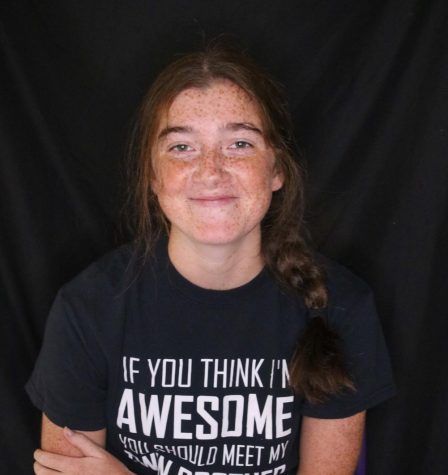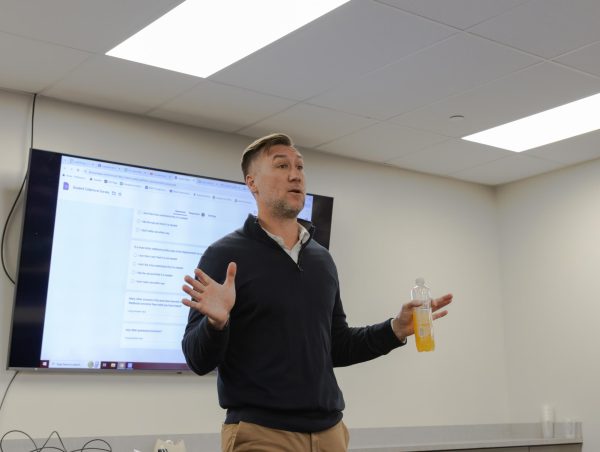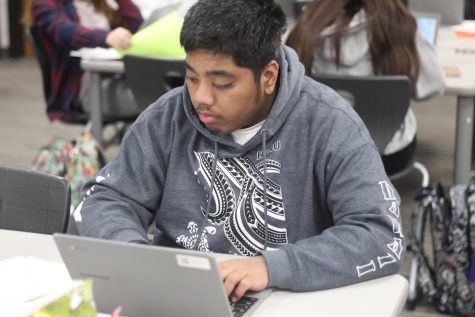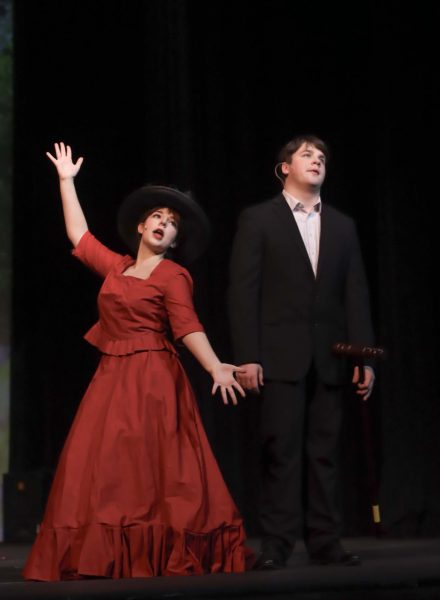Teachers urge students to maintain academic integrity
As stated in the PHS 2020-2021 student handbook, cheating falls into four categories of academic dishonesty: plagiarism, collaboration, collusion and malpractice. In short, any time a student uses work that is not their own, it is cheating and can result in consequences from administration. Consequences can range from a zero on an assignment to OSS.
According to a recent poll of 100 PHS students, 56 of them are guilty of cheating at some point in their high school career as shown below.
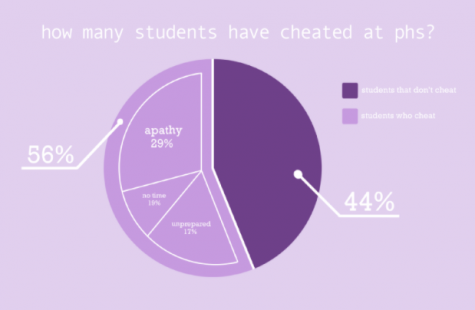
English teacher Kristy Uttley feels that students that do cheat are careless towards their assignments which can create negative behaviors for the future.
“I think 95% of the time it’s just apathy. They just don’t want to do the work, and I think most of the time they are capable,” Uttley explained. “I don’t think that students really understand the severity of what cheating is and what it represents, the bad habits that can begin.”
With the technology available today, students have access to more information and can communicate with one another. Honors biology and anatomy and physiology teacher Mary Packard thinks that the communication between students makes catching cheating even more difficult.
“Either people are sending text messages or sending emails to each other and we have no idea because we don’t monitor that,” Packard said.
According to geometry teacher Kris Crotts, when students decide to copy off of somebody else’s homework they don’t get the practice they need to understand how to do the work themselves. This can lead to being unprepared for bigger tests and assignments.
“I feel like if they are doing a lot of cheating on the homework, it’ll reveal itself on the test,” Crotts said.
Putting notes on phone screens, writing answers on arms, and putting pieces of paper between legs are some examples of how students have cheated in class. Patrick Moss, a sociology, psychology, and US history teacher, shares the craziest way a student has cheated in his class.
“We were doing a notebook one time and the student cut their textbook pages out and glued them into their own scrapbook to turn in for a grade,” Moss said.
Your donation will support the student journalists of Pittsburg High School - KS. Your contribution will allow us to purchase equipment and cover our annual website hosting costs.


